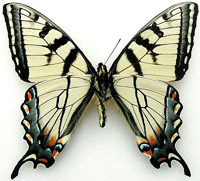Lepidoptera Survey, International

The Taxonomic Report of the International Lepidoptera Survey
Date of this Version
5-1-2022
Document Type
Article
Citation
Taxonomic Report of the International Lepidoptera Survey (May 1, 2022): 1-31
Also available at https://lepsurvey.carolinanature.com/ttr/ttr-10-5.pdf
Also available at the Internet Archive, the Biodiversity Heritage Library, Zobodat, and Zenodo
ZooBank registration: http://zoobank.org/1AC1F3FB-603E-46A0-B8C2-BB9DE88B46BB
Abstract
We present an analysis of the names proposed by Carl Plötz in 1884 for the New World species in the genus Pyrgus Hübner, [1819] facilitated by the genomic sequencing of extant primary type specimens comparatively with a larger sample of more recently collected specimens of these species and their relatives. The changes to nomenclature suggested here are only caused by the identity of primary type specimens as revealed by their phenotypes or though genomic sequencing. All neotypes are designated to stabilize nomenclature in agreement with the current usage of these names, which in unison agrees best with the information available about them. Lectotypes are designated for the following 5 taxa: Pyrgus (Scelothrix [sic]) bellatrix Plötz, 1884 (type locality Argentina: Buenos Aires), Pyrgus (Pyrgus) willi Plötz, 1884 (type locality in Brazil: Minas Gerais), Pyrgus (Pyrgus) albescens Plötz, 1884 (type locality in Mexico), Pyrgus (Syrichthus [sic]) lycurgus Plötz, 1884 (type locality in "Central America," likely southern Mexico), and Pyrgus occidentalis Skinner, 1906 (type locality USA: Texas, San Antonio). Neotypes are designated for the following 4 taxa: Pyrgus (Pyrgus) adepta Plötz, 1884 (Herrich-Schäffer in litt.) (type locality Colombia: Bogota), Pyrgus (Scelothrix [sic]) dion Plötz, 1884 (type locality Colombia: Bogota), Pyrgus (Scelothrix [sic]) adjutrix Plötz, 1884 (Herrich-Schäffer in litt.) (type locality in Mexico: Nuevo Leon), Pyrgus (Pyrgus) insolatrix Plötz, 1884 (Herrich-Schäffer in litt.) (type locality in "Central America," likely southern Mexico). As a result, P. lycurgus and P. insolatrix are objective synonyms. The following are junior subjective synonyms: P. dion of Burnsius adepta (Plötz, 1884), Pyrgus (Syrichthus [sic]) varus Plötz, 1884 of Burnsius orcus (Stoll, 1780) and P. adjutrix of Burnsius oileus (Linnaeus, 1767). Heliopetes (Heliopyrgus) willi (Plötz, 1884) is a species-level taxon and not a subspecies of Heliopetes (Heliopyrgus) domicella (Erichson, [1849])). Genomic analysis of the lectotypes of P. albescens, P. lycurgus, and P. occidentalis establishes them as conspecific with Burnsius communis (Grote, 1872), thus depriving a distinct species currently identified as Burnsius albescens from its name, that becomes a name for Burnsius communis albescens (Plötz, 1884) in accord with its lectotype identity; P. lycurgus and P. insolatrix are its junior subjective synonyms, but P. occidentalis is a junior subjective synonym of B. communis communis. A new name Burnsius albezens Grishin sp. n. (type locality USA: Arizona, Cochise County, Portal) is proposed for the species misidentified as B. albescens. Furthermore, genomic comparisons reveal two other new species and one new subspecies of Burnsius Grishin, 2019: B. burnsi Grishin sp. n. (type locality Mexico: Veracruz, Huatusco), B. adepta inepta Grishin ssp. n. (type locality Ecuador: Pichincha, Tandapi), and B. orcynus Grishin sp. n. (type locality Curaçao: Hato Field) that are cryptic and can be confidently identified only by their genotype.


Comments
Copyright 2022, the International Lepidoptera Survey. Open access material
License: Creative Commons Attribution-ShareAlike-NonCommercial 4.0 International (CC BY-SA-NC 4.0 International)